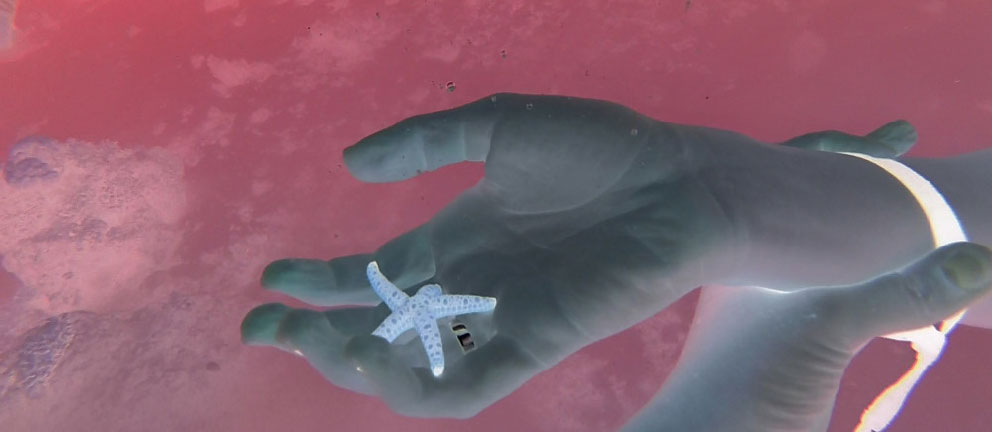Physical Fiction
Contours and shapes, patches and fragments. Using the human body as their anchor, eight visual artists play with narrative and representation in the group exhibition Physical Fiction.
The artists merge a sensibility for the physical with an interest in narrative. Whereas some see the body as a tool, others consider the artwork to be a character. Recognisable images become part of abstract scenes, enigmatic titles hint at a storyline. In a number of different ways, these works of art move between concrete reality and the intangible realm of imagination and association.
In Gwenneth Boelens photogram, her own image is the afterimage of a physical act. Rachel de Joode also plays with the presence and absence of the body. Literal struggles with material have resulted in flesh-coloured amorphous residues. Titled Speculum, Amélie Grözingers reflective circle is suggestive of a mirror or caleidoscope, or even a ‘portal’ to another dimension.
Limbs and faces appear to be floating in Megan Rooney’s pastel-coloured surroundings. Her naive painting style reinforces the uncomfortable atmosphere of the scenes. Kate Steciw constructs collages from stock images and self-made photographs that remind of Rorschach tests. Barely a trace remains of recognisable elements. Helen Dowlings’ poetic video is made up of fragmented holiday films and landscape images. Processing with colour filters has resulted in a sensual montage of images.
Lastly, Jakup Auce and Nora Schultz approach their sculptures as characters in a science fiction-like universe. The anthropomorphic metal figure of Auce expresses a mental state of mind: ‘unease’. Is the adorning dish for infusion, the dark-blue fluid an elixir? The towering forms of Schultz appear fragile and at the same time ominous: as if they could at any moment start moving about on their insect-like legs.


